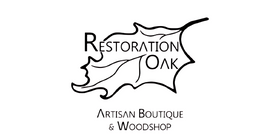If you are a lover of old-world architecture, there is no finer period to explore than the Victorian Era. Boasting an impressive blend of opulence and detail, this style of architecture brings history alive in remarkable fashion. Join us as we delve into the world of Victorian architecture, exploring its delightful aesthetic features and interesting origins!
What Is Victorian Architecture?
Victorian architecture is a term that encompasses the architectural styles prevalent during Queen Victoria's reign over the United Kingdom from 1837 to 1901. It's important to note that Victorian architecture is not confined to a single specific style; rather, it comprises a fascinating mix of various overlapping genres, including the early Gothic Revival style, Folk Victorian, Greek Revival, Italianate, Second Empire, Stick, Romanesque Revival, Shingle, Colonial Revival, and the ever-popular Queen Anne style towards the end of the era. Originating in England, Victorian architecture's influence can still be seen in the cities and towns of the UK today. However, this distinctive architectural trend spread beyond its borders to places like North America, Australia, and New Zealand, where it underwent adaptations to align with local preferences, lifestyles, and construction materials. As a result, these regions boast unique variations of Victorian-inspired structures which reflect a blend of history and adaptation to modern needs.

The History of Victorian Architecture
During the Georgian Period (1714-1830) and late Georgian Period (1830-1837), architecture featured generously sized rooms within three-story buildings. Families typically occupied the first two levels, while the smaller third floor was designated for the servants' quarters.
The Victorian Era emerged with increasing prosperity, a growing middle class, and the revolutionary impact of mass manufacturing during the Industrial Revolution. Architecture from this period aimed to accommodate individuals from diverse backgrounds and financial statuses. This ranged from closely packed rows of terraced houses designed for factory workers on bustling narrow streets, often lacking gardens and sanitation facilities, to semi-detached and detached houses offering modern amenities such as running hot and cold water, sanitation, and gas, which became more common by the end of the era.

Key Elements
- Victorian architecture is a captivating blend of elegance and grandeur, usually spanning two to three stories, resulting in impressive and imposing mansions. These structures can be made of wood or stone for their exteriors. Wood siding is commonly used in most Victorian designs, while the Second Empire and Romanesque variations often showcase sturdy stone walls.
- Asymmetrical and intricate designs are common, which distinguish them from the simpler Greek Revival style. These homes have wings and bays extending in various directions, adding to their unique charm.
- Decorative details play a vital role in Victorian aesthetics, earning them the affectionate nickname "gingerbread" houses. Elaborate wood or metal trim adorn the exteriors, adding to their ornate appeal.
- To create texture and visual interest, Victorian siding often features scalloped shingles, patterned brickwork, or half-timbering, giving depth and character to the facades.
- The rooflines of Victorian houses are equally captivating, featuring Mansard roofs or steep, multi-faceted roofs with several gables pointing in different directions. The Mansard roof, especially prominent in Second Empire Victorian design, maximizes interior space.
- A classic feature of Victorian homes is the one-story, wide, wrap-around porch adorned with ornate spindles and brackets, especially prevalent in the Queen Anne style.
- Some opulent Victorian mansions take it a step further with the addition of circular or octagonal towers, complete with tall, pointed roofs, enhancing the grandeur and allure of these architectural masterpieces.
- As for colors, Victorian homes broke away from the uniformity of previous eras. Instead of traditional whites or beiges, they embraced vivid earth tones like burnt sienna and mustard yellow, making a bold and colorful statement.
Exterior Features
- Intricate patterns and carvings with style-dependent variations
- Asymmetrical facades featuring various window and door styles and sizes
- Roofs with steep pitches, dormers, and towers for architectural drama
- Variety of materials incorporated on facades including wood, stone, brick, and iron
- Bold and captivating structures on an impressive scale
- Vibrant colors adding to the overall charm
- Inviting verandas, porches, and window bays for outdoor enjoyment
Interior Features
- Ornate plasterwork on ceilings and walls, adding elegance and artistry
- High ceilings generating a sense of grandeur and spaciousness
- Stained glass in entrances and stairwells, casting a mesmerizing glow
- Fireplaces as focal points for warmth and decorative displays
- Built-in seating and cabinets, combining functionality with character
- Parquet flooring with ornamental embellishments for a luxurious feel
- Pocket doors for flexibility and space division
- Grand and sweeping staircases, adding a touch of majesty to the front rooms

Practicality of Victorian Architecture
The rooms in Victorian houses are more compact and have fewer storage areas compared to contemporary homes. To fix any sinking issues, you'll probably need to do some rewiring and repair the inside plaster and trim, as is often the case with older homes. Maintaining all that fancy exterior trim can be a lot of work. The trim designs used in Victorian houses are not easy to find, so you might end up paying for expensive handmade replacements. But the biggest concerns are health-related. Victorian architects loved using asbestos in their buildings and decor, and we now know it's dangerous to breathe in those fibers. Getting rid of asbestos or sealing it off can be pretty pricey, so it’s better to get a full house inspection done.

The enchanting world of Victorian architecture, which flourished during the reign of Queen Victoria in the 19th century, continues to captivate and inspire admirers to this day. With its distinctive features, such as the intricate wrought iron detailing and the mesmerizing beauty of stained glass, Victorian style houses stand as remarkable testaments to an era of artistic excellence and innovation.

Leave a comment